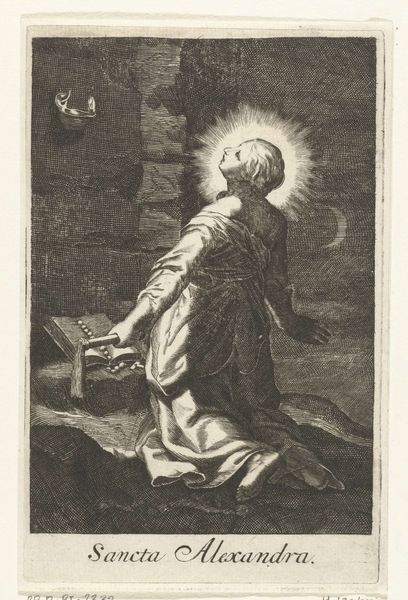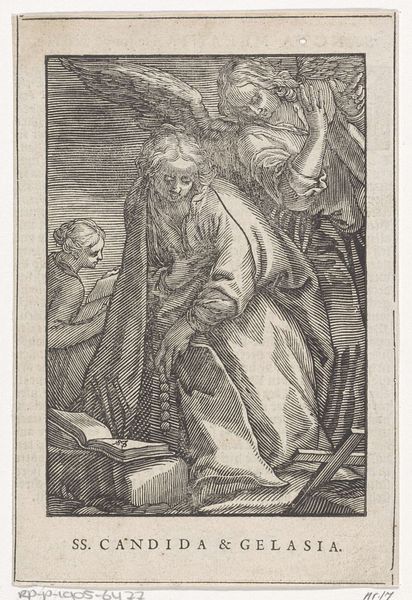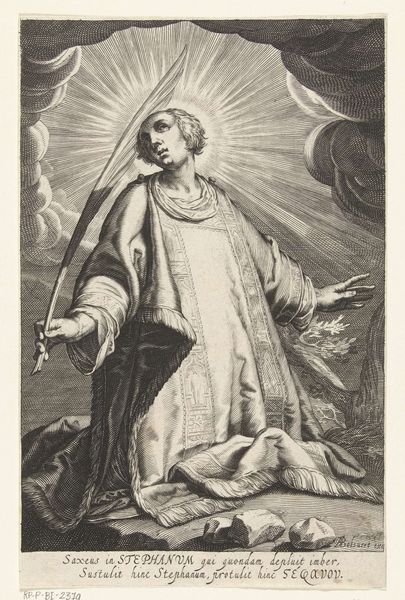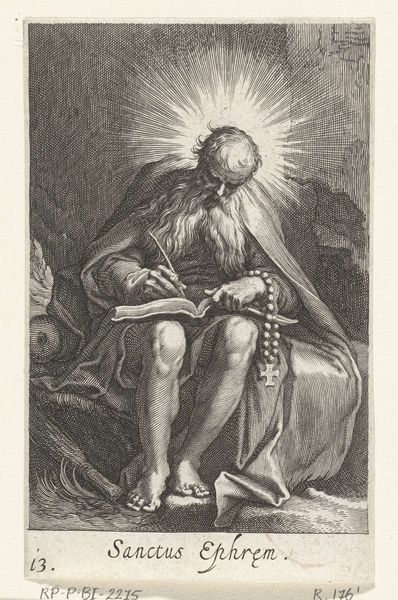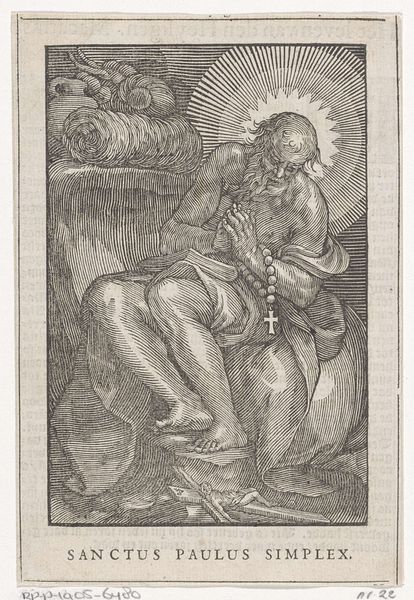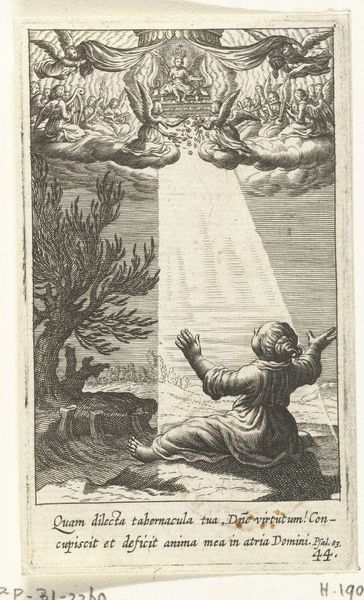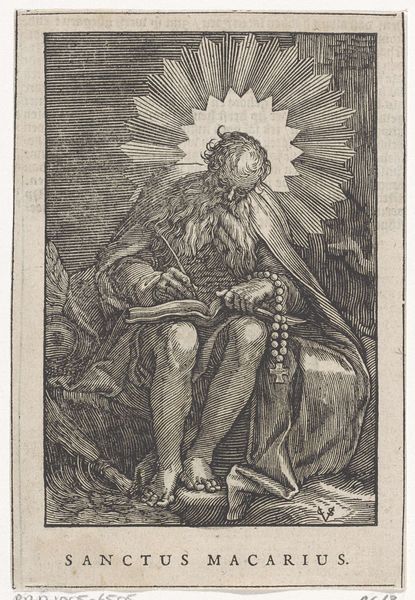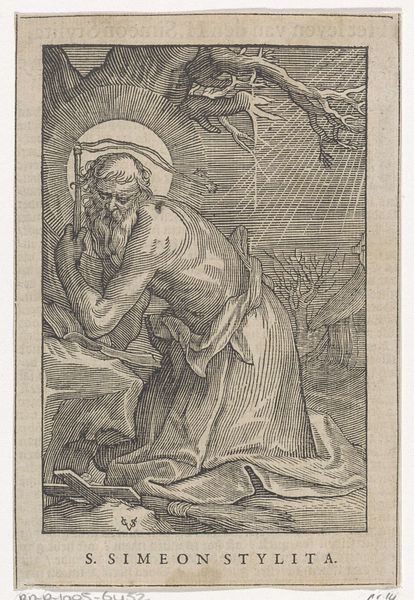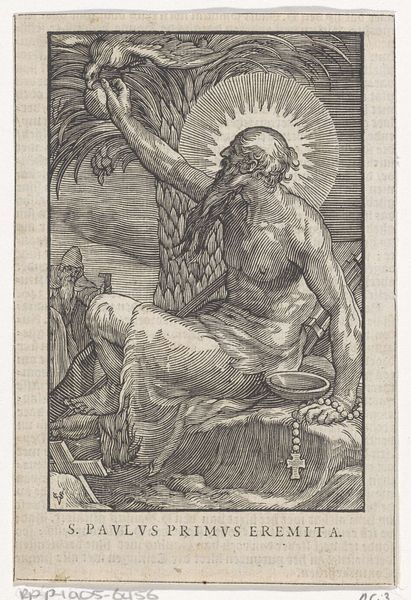
engraving
#
portrait
#
baroque
#
figuration
#
engraving
Dimensions: height 154 mm, width 104 mm
Copyright: Rijks Museum: Open Domain
Curator: This is “Heilige Alexandra als kluizenares,” or “Saint Alexandra as a Recluse,” an engraving made in 1644 by Christoffel van Sichem the Younger, currently held at the Rijksmuseum. Editor: There’s a certain raw quality here; you can almost feel the lines cut into the block, creating this stark, devotional image. I see a lone figure, haloed, eyes lifted…it's a study in isolation, even transcendence. Curator: It speaks to the baroque fascination with both piety and the individual soul. The historical Alexandra was a Roman empress who chose a life of religious seclusion. Sichem is contributing to an already popular narrative that intersects with contemporary understandings of feminine devotion. Editor: Consider the act of engraving itself – a repetitive, physically demanding labor to reproduce this image. There's a connection to Alexandra's own renunciation. We often overlook that physical toll; religious iconography, especially when disseminated like this, came from a workshop. Curator: Exactly. The means of production here are key. Sichem’s workshop would have made multiple prints for a growing market of religious images and portraits. The image could serve for private worship or public veneration, influencing religious ideas throughout society. Editor: And what’s she reading? A rather thick book – almost handled like another piece of raw material. I find that really fascinating; how that physical contact with knowledge becomes crucial in these engravings. The rough texture emphasizes labor and direct human engagement with the divine. Curator: Absolutely. That book connects to literacy, which was a developing idea for women’s access in society and their involvement in public discourse. It reveals broader socio-political context; beyond just depicting a saint, Sichem depicts an ideal to emulate. Editor: I hadn’t considered the cultural politics – a saint to emulate, distributed in the public sphere. I’ve now learned more about the layered material choices embedded within this solitary image. Curator: And seeing it within a broad, complex moment in social and religious history adds new dimensions. I appreciate seeing the materiality, its implications beyond religious art and piety, in order to consider this from new perspectives.
Comments
No comments
Be the first to comment and join the conversation on the ultimate creative platform.
